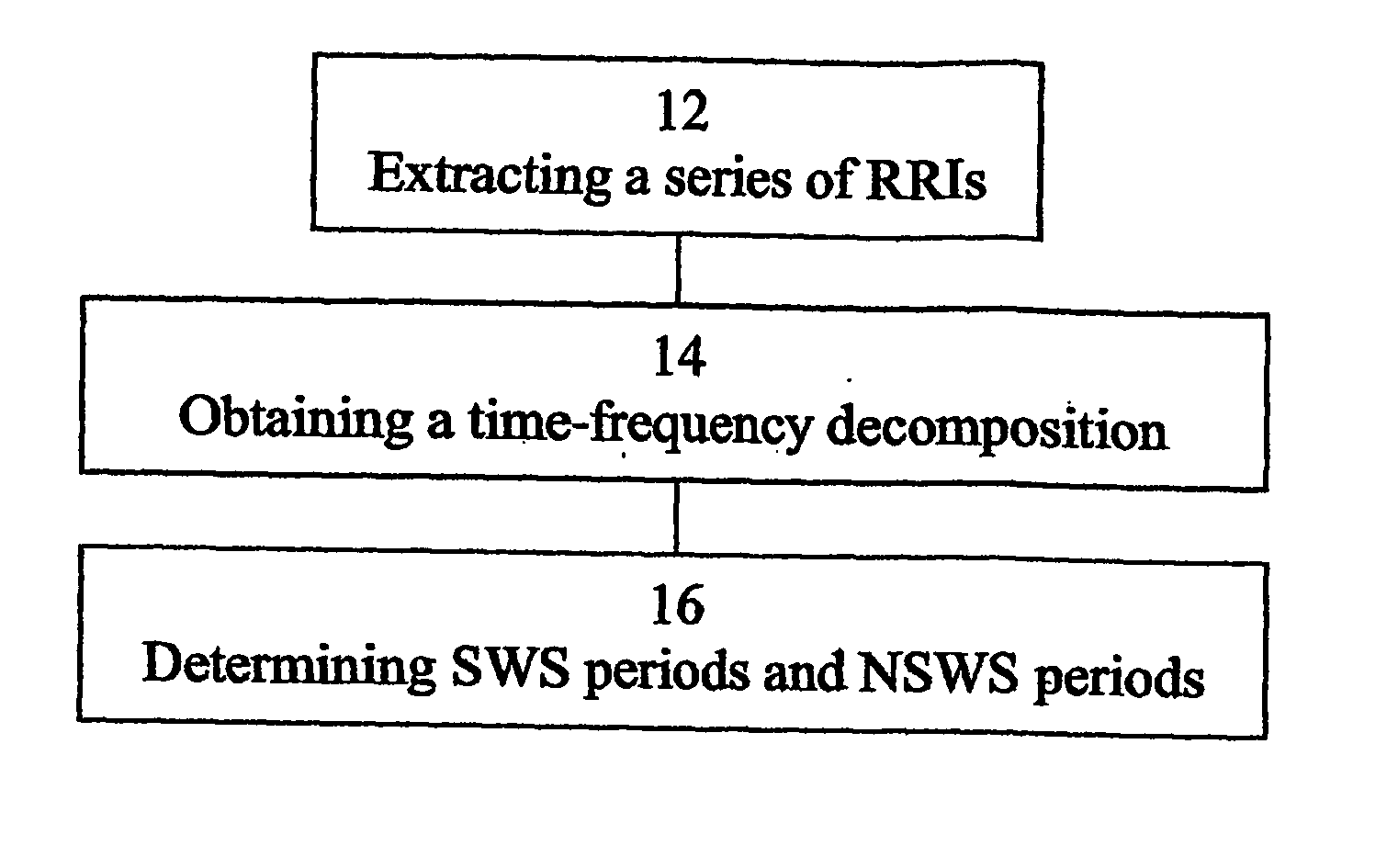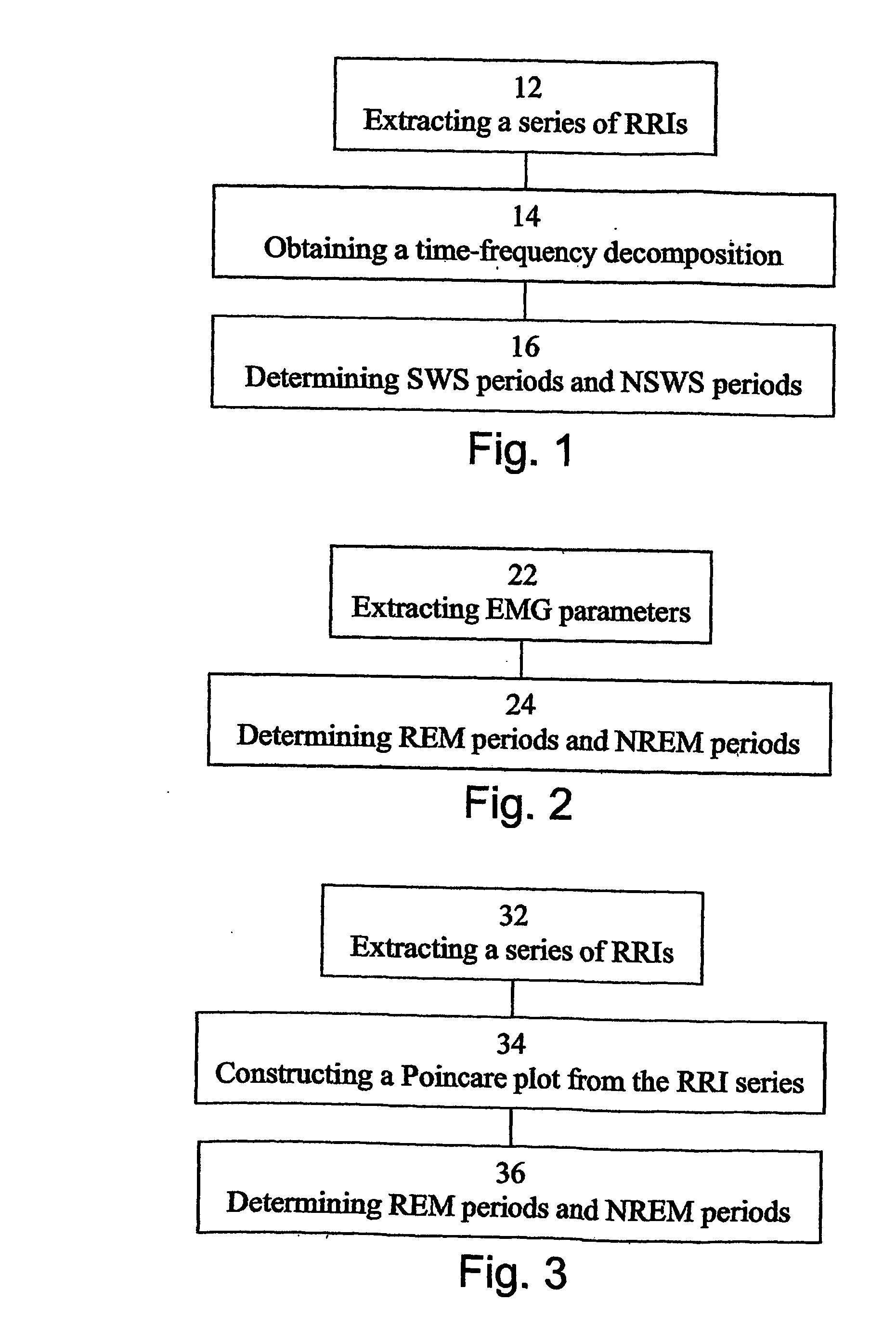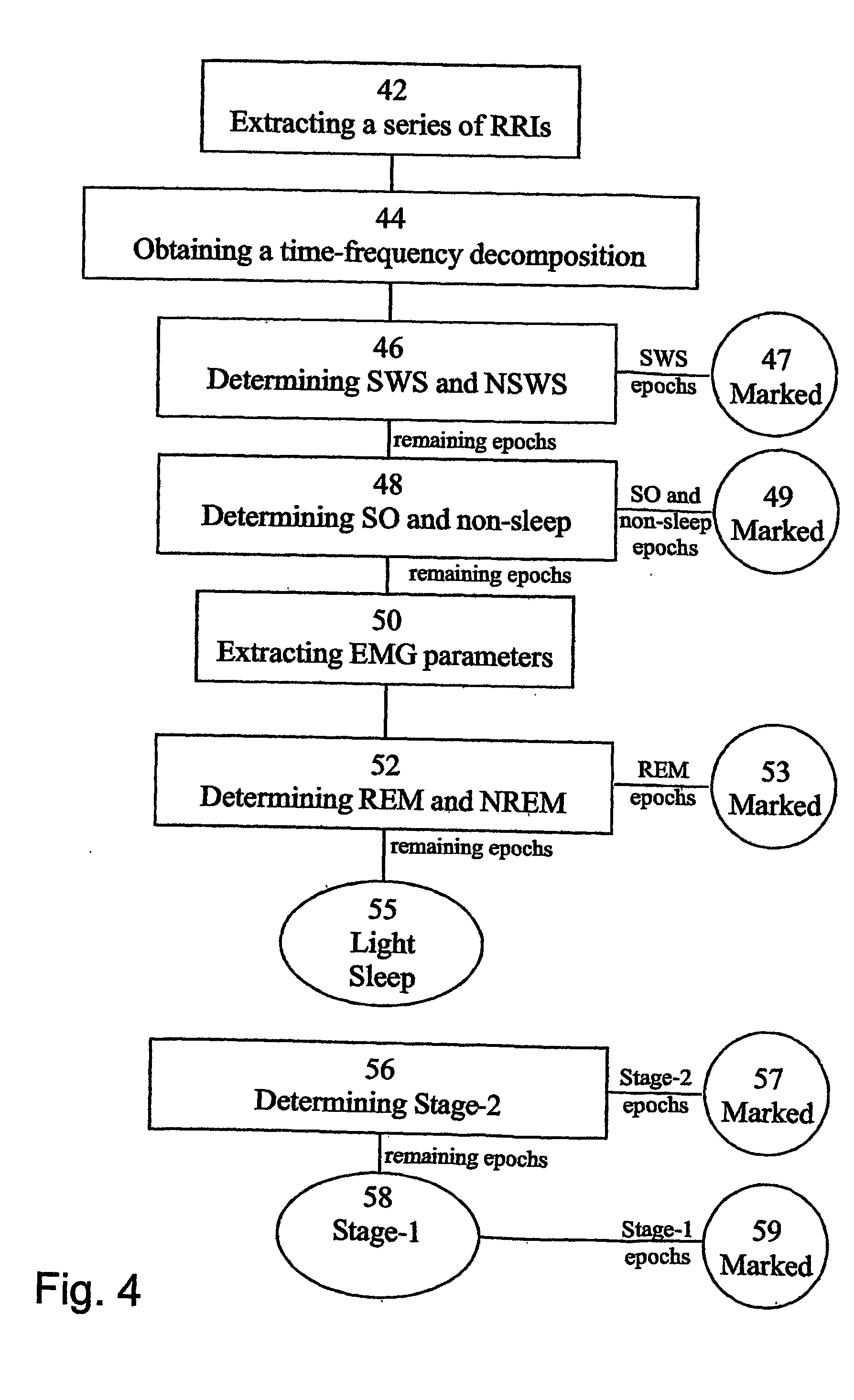Method, apparatus and system for characterizing sleep
- Summary
- Abstract
- Description
- Claims
- Application Information
AI Technical Summary
Benefits of technology
Problems solved by technology
Method used
Image
Examples
example 1
SWS Detection
[0382] In this study the behavior of the autonomic nervous system at SWS was investigated, using time dependent power spectrum analysis.
[0383] Experimental Methods
[0384] The study was performed on 34 adult subjects. The subjects were 35±15 of age, 20 of which were males and 14 females. The subjects were arbitrarily selected from a typical adult population referred to a sleep study for a multitude of reasons. Children under 15 years of age and subjects with a heart related disease were rejected. Data from 17, arbitrarily chosen, subjects served as a training set and the other half served as a test set.
[0385] For the purpose of validating the method and to compare the results with other methods standard PSG data were also collected.
[0386] Hence, the subjects underwent a full sleep study including recordings of the following signals: 2 central EEG (digitized at 100 Hz), 2 occipital EEG (digitized at 100 Hz), chin and tibialis EMG (digitized at 100 Hz), left and right ...
example 2
REM Detection Using Poincare Plot
[0396] In this study the behavior of the autonomic nervous system during REM sleep was investigated, using Poincare plots of RRI series.
[0397] Experimental Methods
[0398] The study was performed on ten healthy subjects (7 males and 3 females) without any known sleep problem. For the purpose of validating the method and to compare the results with other methods, standard PSG data were also collected for two consecutive nights.
[0399] Hence, the subjects underwent a full sleep study including recordings of the following signals: two central and two occipital EEG leads (digitized at 100 Hz), two eye movement leads (digitized at 100 Hz), submental EMG (digitized at 100 Hz), leg movement (digitized at 10 Hz), nasal airflow (digitized at 100 Hz), end-tidal CO2 (digitized at 12.5 Hz), oxygen saturation and pulse waveform (digitized at 1 Hz), and chest and abdominal effort (digitized at 10 Hz).
[0400] The PSG data were monitored off-line and sleep stages w...
example 3
SO Detection
[0407] In this study the behavior of the autonomic nervous system at sleep onset was investigated, using time dependent power spectrum analysis.
[0408] Experimental Methods
[0409] The study was performed on thirteen healthy young subjects without any known cardiac, respiratory or neurological problems. The subjects underwent two whole night sleep studies. From the thirteen subjects, eight subjects (ages 22±5) who had no sleep related problem, and a long enough time period before SO to allow time-dependent spectral analysis, were included in this study.
[0410] For the purpose of validating the method and to compare the results with other commonly employed methods, standard PSG data were also collected.
[0411] Hence, the subjects underwent a full sleep study including recordings of the following signals: 2 central EEG (at 100 Hz), 2 occipital EEG (digitized at 100 Hz), EOG and chin EMG (digitized at 100 Hz), ECG (digitized at 200 Hz) and abdominal and chest respiratory ef...
PUM
 Login to View More
Login to View More Abstract
Description
Claims
Application Information
 Login to View More
Login to View More - R&D
- Intellectual Property
- Life Sciences
- Materials
- Tech Scout
- Unparalleled Data Quality
- Higher Quality Content
- 60% Fewer Hallucinations
Browse by: Latest US Patents, China's latest patents, Technical Efficacy Thesaurus, Application Domain, Technology Topic, Popular Technical Reports.
© 2025 PatSnap. All rights reserved.Legal|Privacy policy|Modern Slavery Act Transparency Statement|Sitemap|About US| Contact US: help@patsnap.com



